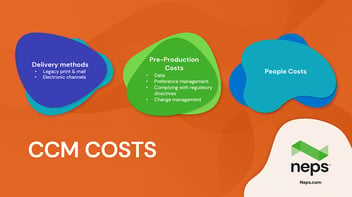The Value of Keeping Pace: The Rise of Customer Expectations and the Future of Digital Communications
The communications industry finds itself in very interesting times.
Keeping pace with technology ten years ago used to delight customers and guarantee some level of comfort over the competition. As new tools and abilities debuted at a moderate pace, they could be investigated, implemented, and introduced to the customer base at a similar rate.
However, as we move forward, the emerging technology — and by extension, the needs — of the upcoming generation is evolving at a blistering rate, far faster than traditional business norms. Social media, smart phones, and digital media platforms provide information and connections instantaneously, creating a culture that places added value on communication, knowledge, availability, and timeliness. The average adult regularly uses 7 different social media platforms; at least 25% of adults are connected on 6 different devices, with an average of 5.3 connected channels.
Given the amount of time and effort the average person spends each day in front of a screen, it should come as no surprise that customers expect more out of their online communication services. Those who have grown up in a world saturated by this technology and social media, namely Millennials and Gen Xers, are virtuosos of the latest and greatest, mastering new capabilities in a fraction of time it takes previous generations and still expecting more. They won’t be sated by bells and whistles, some technological razzle dazzle — they demand online services that are personalized, meticulously maintained and updated, self-serviceable, and seamlessly modern.
Most businesses, more likely than not, are already behind in meeting these expectations: 35% of consumers in 2019 said most companies they do business with need to improve their customer experience and communication services. That number jumped to 59% in 2021, and then to a staggering 69% in 2023, with the highest dissatisfaction rates and expectations originating from younger generations.
The discrepancy between what’s available on the market and what their servicers are providing in actuality is a sore spot for many customers, one they eagerly seek to rectify. Customers are 2.7x more likely to spend more when companies communicate clearly; businesses that invest in developing cohesive conversations and better communications experiences, in turn, grow revenue 41% faster. The customer loyalty, responsiveness, and data obtained from a reliable digital presence pays for itself and then some.
The name of the game going forward is investing in the customer experience first and foremost, in creating positive, personalized experiences and quick outcomes from minimal effort, all through the very best tech on the market. Still, the bar for the very best tech continues to rise at a head-spinning speed. To businesses, it can feel like a game of catch up, except the competition is Usain Bolt.
Here's the trick: it should feel like that. Because that’s exactly what it is. What separates a flash-in-the-pan business from those that have long-term sustainability in mind, however, is their mindset towards this seemingly no-win game.
In a very Darwinian sense, it is not the strongest nor the smartest that will survive — it will be those who are most willing and able to adapt, and can plan accordingly. Creating fragmented experiences in the futile attempt to keep up with emerging technology can only lead to inconsistent results, frustrated users, and brand erosion. Instead, businesses must plan for what’s coming around the corner if they want to catch it; platforms must be managed with open-ended scalability and flexibility in mind.
Your customer, in wanting to use more self-service tools and digital transaction methods, is becoming a more active part in your day-to-day business as time goes on. Positive digital experiences focus on the ability for customers to co-pilot with businesses, which not only keeps them connected and informed, but provides businesses with insight and value.
The next generation’s expectations regarding communications services will undoubtably drive innovation and shape the future of technology. With ultra-fast connectivity, robust security measures, and AI-driven smart assistance, communication platforms must rise to the challenge of meeting these demands or risk drowning in the competition and being left in the dust. Embracing customer empowerment will not only cater to the expectations of the next generation, but also enrich the way we communicate and build relationships in this emerging digital age.



